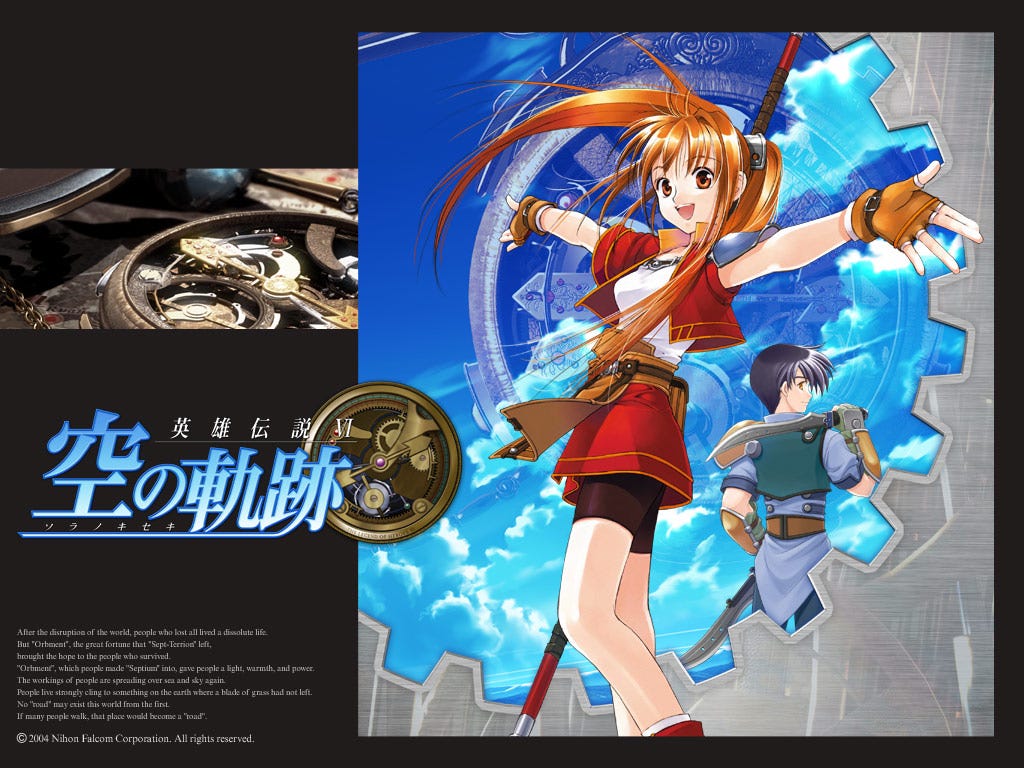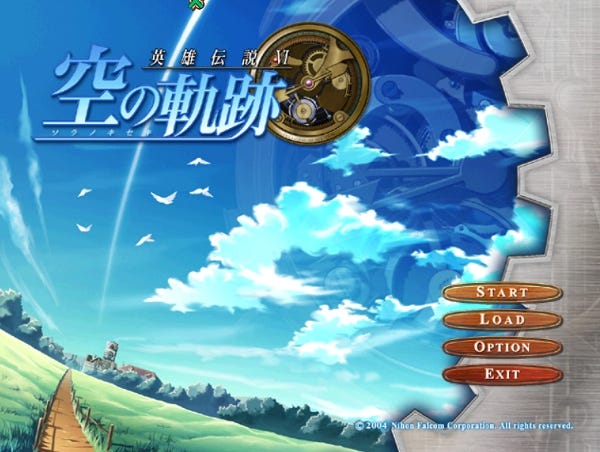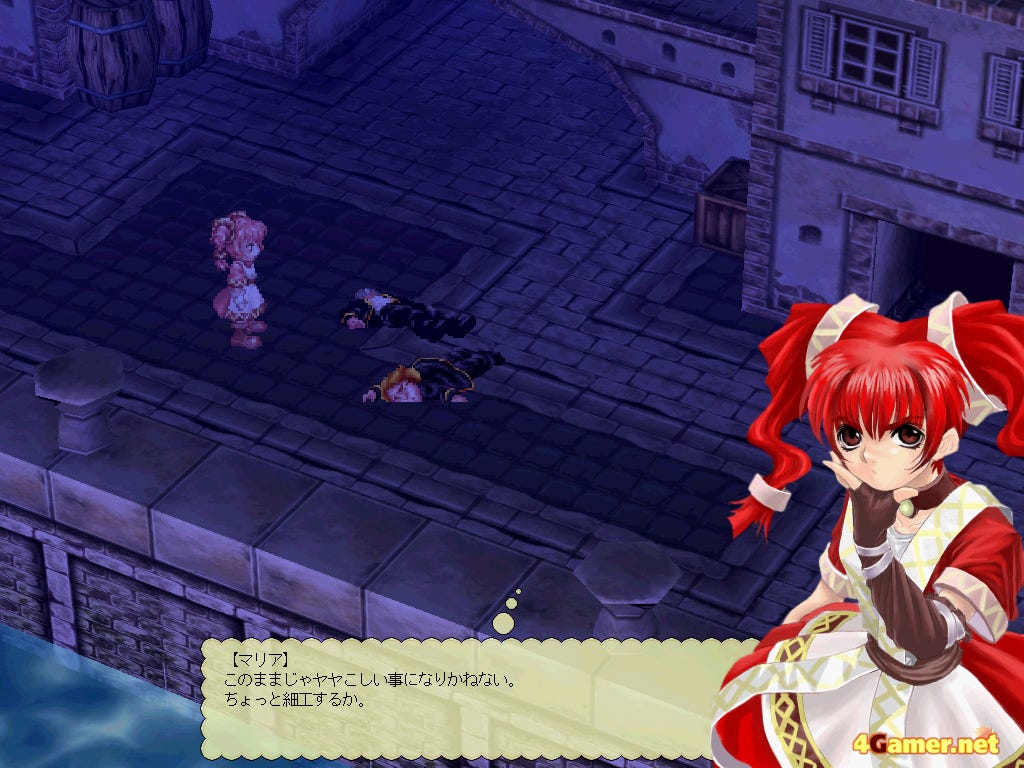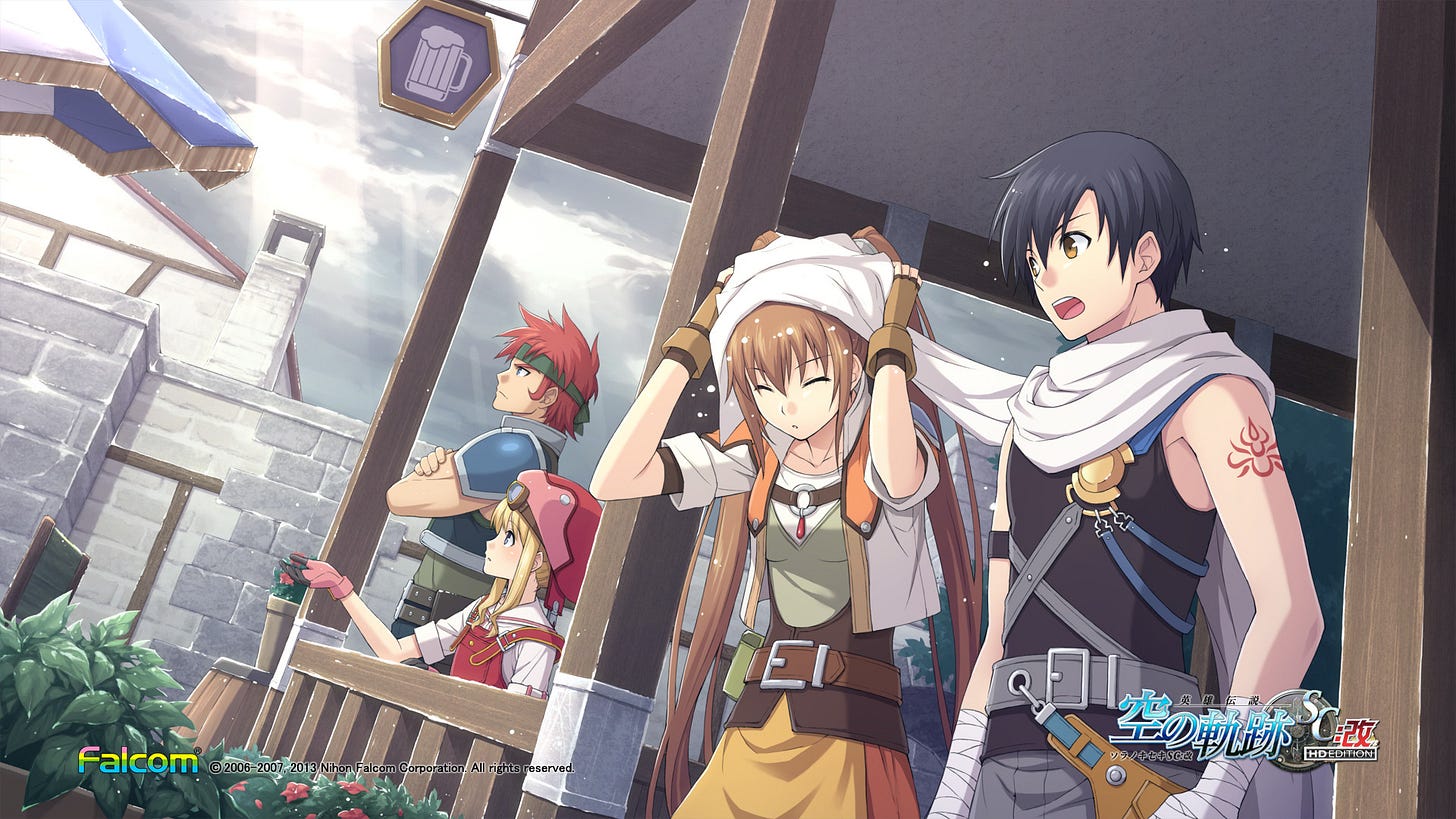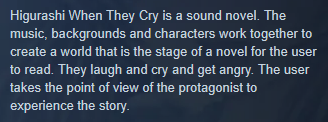feelings soar with the wind
just look at those little sprites jump around on screen man, god damn
When I was 12~13 years old, an employee at now defunct bookstore Borders said "hey want a recommendation?" I probably figured oh sounds cool, sure. The book in question was Homeland by R. A. Salvatore. Looking back on this moment, we can see that this would likely be the single biggest blow to my prospects of having a social life, with the resulting shockwave and mushroom cloud of my becoming very interested in the Dungeons and Dragon’s Forgotten Realms adventures of a really cool dark elf guy with two swords destroying any chance I had at being normal to start middle school. Like Hikigaya Hachiman getting hit by a car, that was it, that was the ballgame. None of it was without precedent though, as fantasy and science fiction have had a stronghold on my preferences for the types of stories I’ve enjoyed since a young age, and I can't help but think that recommendation put me where I am today. People have a tendency to use "absorbed" as a way to describe being very into a hobby, and fiction is one of the easiest ways to forget about the world around us, to become absorbed. It’s always nice to feel like you’re a part of something.
Thing is though, I didn't feel as though I was as much a part of something when it came to video games growing up. You don't think about these types of things as a kid, you're just playing what you can in the moment. Like whatever your parents could afford. I just didn't have it in me as a child to be concerned about my lack of Final Fantasy games, hell I didn't even know they existed. When my folks upgraded us from dial-up to DSL internet some time in the early 2000's, I started reading about all of the games I could. I'd read basically anything, blog posts, forum posts, Wikipedia entries, whatever. I just enjoyed learning about anything within the hobby I enjoyed, a habit I carry forward as an adult.
Around this period, a brief run-in with the open beta of a South Korean MMORPG titled R.O.S.E. Online had me scouring through MMORPG databases for what feels like an eternity in my memory. Thing is, I, being a child, had no idea what an open beta was. When the game I was introduced to by a friend was suddenly ripped away without warning, I struggled to understand why. I began trying to find something, anything really, that would fill the void. R.O.S.E. would later launching officially with a subscription fee, much to my horror as a very unemployed child. I still remember the imagery of the game world, and how the hills and valleys unfolded across my family's undoubtedly shitty PC monitor, which was tucked away into a cabinet when not in use, in a room nobody ever used. The music was filled with 00's era game synths, and anime character art dotted the loading screens you might now only find when looking for ironic 00's anime wallpapers. It was a regular occurrence that I'd find a game with the same style of character art, likely due to developer Gravity's popularity on their other title Ragnarok Online. These other games, barely scratching the itch, would reel you in with an inspiring site landing page of some beautiful clouds and fun looking characters, but after hastily signing up for the game, you would be met with a completely different style of art, mechanics, or lack of features. These games didn't fit the mold I had cast out of memories from a game which realistically I probably only had like, 2 or 3 months to play.
By the time I had even secondary exposure to this particularly online and anime subculture, the general trends seemed to move away from the simplistic idea of JRPGs, something I had not much interest in, but a bit. Final Fantasy VII and Final Fantasy X had left an impact crater in the collective minds of anyone who were a bit older than I was and had a PlayStation console. Anime was going through an era I don't think I need to explain here, mostly concerning headbands hand seals and such. By the time I was old enough to really care about any of it, it was already on what felt like a declining trend. I would get in on RPGs in a major way once I was nearly out of high school, and quickly devoured Persona's 3 and 4. I enjoyed these, but I was still left wanting by the end of each. There weren't particular alternatives that came to mind. It became harder to find what I wasn't really looking for, but still wanted nonetheless. The idea of the games that drove me to such lengths to find alternatives as a kid persisted though, bouncing around inside of my mind like the DVD logo on a screensaver. It didn't have to be an MMO. What games like R.O.S.E. Online put in my head wasn’t so much a concrete idea of a game. Maybe the best way to say it is simply the vibes.
Years ago, pondering on this same subject, I realized the following: I think what I wanted was to play the RPG Maker art.
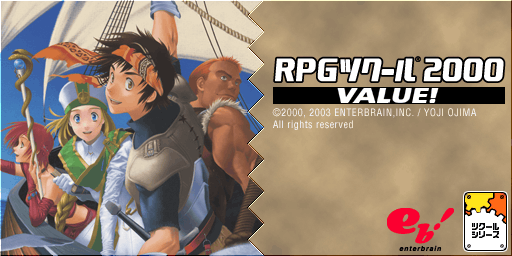
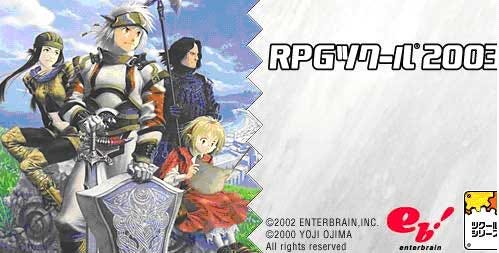
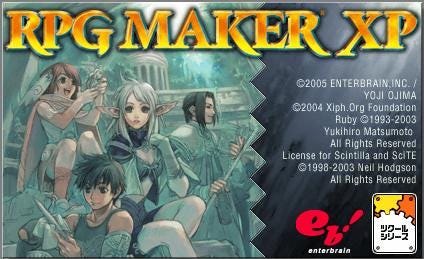
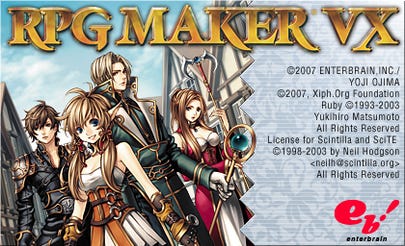
Not to play RPG Maker games, not to make a game in RPG Maker, oh no, but to play a game that felt like the cover of an RPG Maker game. Our heroes, simple in design and bright under a wide blue sky, are setting off on a fantasy adventure that isn't trying to break some kind of predesigned mold but instead is embracing the expectations of what is is and what it can be. Will there be airships? Yeah, for sure. A church? Yep, you got it. Will there be swords? Hell yeah brother. Will there be music packed to the brim with carefully arranged motifs and themes, powering through every triumph and every sorrow the party encounter? Come on now, you know there will be.
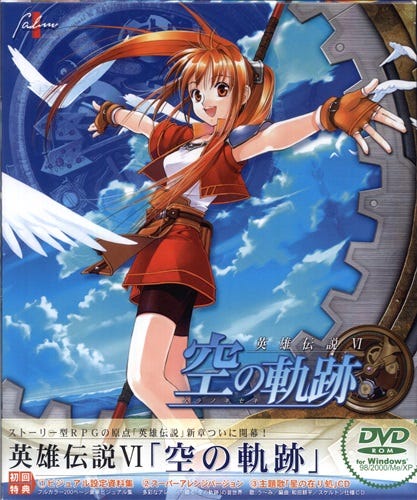
In June 2004, Nihon Falcom released The Legend of Heroes VI: Trails in the Sky (lacking the FC for First Chapter, which would be added later) for Windows 98/2000/ME/XP with the marketing tagline "忘れられない旅になる", or roughly "An unforgettable journey." The game takes place on the fictional continent of Zemuria, which has undergone a rapid technological and societal transformation as a result of the invention of Orbal technology, a sort of magic-energy hybrid that can be used to generate what we might recognize from fantasy fiction as magic, or alternatively, to power computers, airships, et cetera. This throws the world from a level of technology on par with the late Middle Ages/Early modern period to a what begins approaching modern levels--and beyond. Trails in the Sky follows new junior members of the Bracer Guild--a non-governmental community peacekeeping agency that spans the continent--on their journey of growth, discovery, and mystery through their homeland, the continent’s southwestern seaside Kingdom of Liberl.
Trails in the Sky is a game displayed to the player through an isometric view of the game world, with a little bonus. Not only can the player navigate the characters around on screen in a traditional sense of movement, but the viewing angle can be rotated 360 degrees around the character in most areas of the game. It doesn’t always work perfectly, but it does give you a ton of respect for the team who developed the game, clearly modeling almost all of the game environments to be viewed from multiple angles. The characters are displayed as 3D models designed from sprite artwork that would indicate the character’s facing position, essentially becoming a rotating and moving sprite on a few axes in the 3D environment. Japanese RPGs have had this sort of vantage point before, most notably in my own memory is Xenogears. However we can also look to a game Nihon Falcom published in Japanese, 2001 PC title Arcturus: The Curse and Loss of Divinity, from South Korean developers Sonnori and, coming full circle for us here, Gravity, for general inspiration on Trails in the Sky’s look.
The cinematics, if you can call them that, of Trails in the Sky are possibly the hardest selling point for the game. In a modern environment of hyper realistic, hyper stylized console titles, what am I going to get out of some little sprites running around on screen? This indeed is where immersion is an important factor for new players to have to reach. To their credit, Falcom’s choice to use character portraits for text-box dialogue is in-genious, as it characterizes the text with a massive variety of faces to pull from. It quickly becomes the difference between the player sitting up in their chair at attention when two sprites are dueling on screen, sound effects ringing out for jumps and weapons colliding. One of my favorite choices the development team made with the game, and one that persists to the current era of the series, is pulling in black bars to change the aspect ratio during important scenes, always giving you an idea that things are about to go down.
Both aesthetically and thematically, the Trails series pulls from a variety of sources. Trails in the Sky is often described by fans as being most akin to a 90's or 00's adventure manga series, and I think that rings true to a point. The expectations of an adventure, traveling to new places, meeting new people, and taking wins and losses along the way, are all there. Structurally though, Trails in the Sky, and the Trails series overall, are a series jam-packed with mysteries, in which your protagonist is a detective. Each chapter will typically bring you to a new location, with a new problem to solve, culminating in the building of clues and evidence until eventually a final encounter is had, in which the game may only give you a bite-sized bit of the information you wanted to learn, before adding on to you enough questions to fill a mid sized sport utility with. It's not just so episodic, as the threads our junior Bracer leads are pulling at will undoubtedly unravel a game-spanning bigger picture before long. The mysteries of the Zemurian continent are for many a huge reason why they fall in love with these games, as it turns out, you are also a detective trying to crack the case of the series.
I would be remiss if I acted like the entire appeal of this game is about the setting, the worldbuilding, or perhaps, the lore, as the parasites our fextralife poisoned water might have use to refer to it. It's cool that you can talk to so, so, so many NPCs, each with their own unique names and dialogue that will update after progressing within the game. Where Trails in the Sky, and the series in general, hit a bullseye, is with character writing. It is the range they give the characters that speaks the most to me personally. Estelle may often fit the outline of the energetic anime tomboy character archetype, but the game allows her to be so much more than that as she grows as a person throughout the game. Joshua has his own moments of deeper introspection throughout, providing meaningful insight into his thoughts and actions as he sorts through where the journey will take him. Moments of sadness, humor, angst, and catharsis can co-exist within the character writing outside of what can be perceived by archetypical character traits.
The series' most notable trait at this point, its length, gives us all the more time to explore the lives of the inhabitants of Zemuria. This doesn't mean you're playing multiple games worth of Nihon Falcom's own Namek Saga, it isn't wasteful in any sense--it just means you get to hang out with the characters while they eat lunch at an ocean view, talk about old times had with a friend downtown, or gaze out at the city lights from a rooftop as they sort through their troubles. Some wear their heart on their sleeve, some don't want to open up to anyone. Some you will watch grow up throughout each title. These games, until Sky 1st Chapter at least, still boasting the title 'The Legend of Heroes' in their branding, are about the heroes, who are normal people, doing the right thing because it’s the right thing to do, in a way only emotionally transparent anime characters shouting over movingly deep violins and/or screeching power metal guitars can convey.
I’ve spoken fairly at length about 2004’s Trails in the Sky here, but of course, I wouldn’t be writing this if it weren’t for the upcoming, less ambiguosly titled, Trails in the Sky First Chapter. Falcom is using their recently acquired expertise in creating deceptively high budget looking and playing games to remake FC, and it is very much so just FC in the modern era, with a few additions here and there on top. If you’re interested in either version, I’d highly suggest picking either of them up. There aren’t many folks who play FC to completion and don’t continue with the series for at least one more game, so you should have plenty to enjoy if you do decide to.
I hesitate on overstating here, and I realize this entire post is really giving Higurashi Chapter 1 Steam description, below if you're not sure what I'm referring to. That’s fully intentional.
Thing is, as much as I wanted to write a bit about what these games mean to me, I also want to preserve the experience which I had for others to enjoy. I discovered the series only because of fan-art I saw online, and immediately purchased FC—only to bounce off. The next year I would go back to it and go on my own unforgettable journey, playing every available game in the series in the span of 4 months on a range of platforms from PC to CFW PS3 to PS4. I failed a class in university because I couldn’t stop playing Trails to Azure. I marched to the Kinokuniya near Tachikawa station in a snowstorm, knowing it was the biggest store for Trails merch due to its proximity to Falcom’s office building, only to find out they had closed up shop early because of that same snowstorm, like yeah man, no shit, that makes sense. I always wait impatiently for the next game in this series to come around, and when I do get my hands on it I just log off from damn near everything and do my damndest to enjoy it. Seeing what new mysteries are abound and what new locations there are to explore and adventure into, what new plot threads might get pulled or tied up. God knows I’ll be crying, no mysteries to be had there.
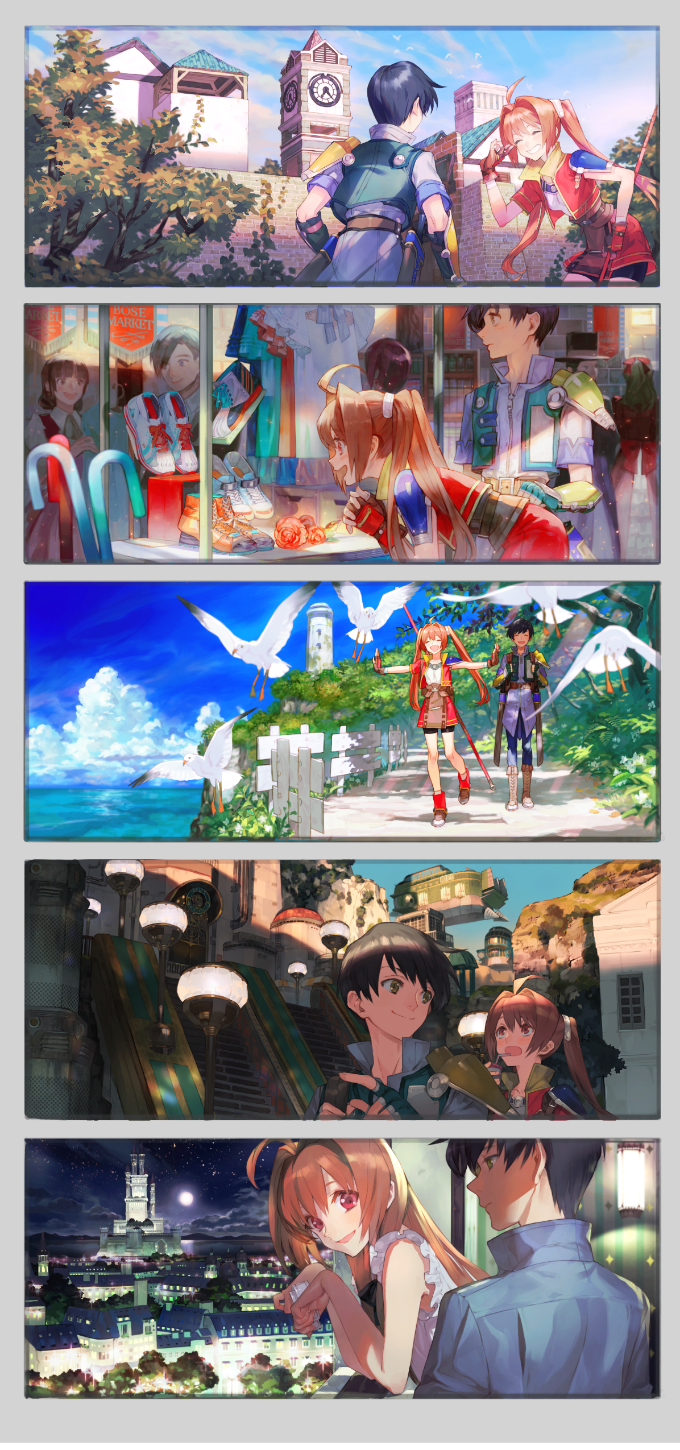
From these stories I get a feeling of "being home" that I can’t say I get from anything else. Curling up with a good book might be the only real comparison I have..and if that’s the case, I suppose I might just be doing the same thing to which that Borders employee did to me all those years ago. We'll see.
Oh and yeah, the game part of it is pretty good too.


